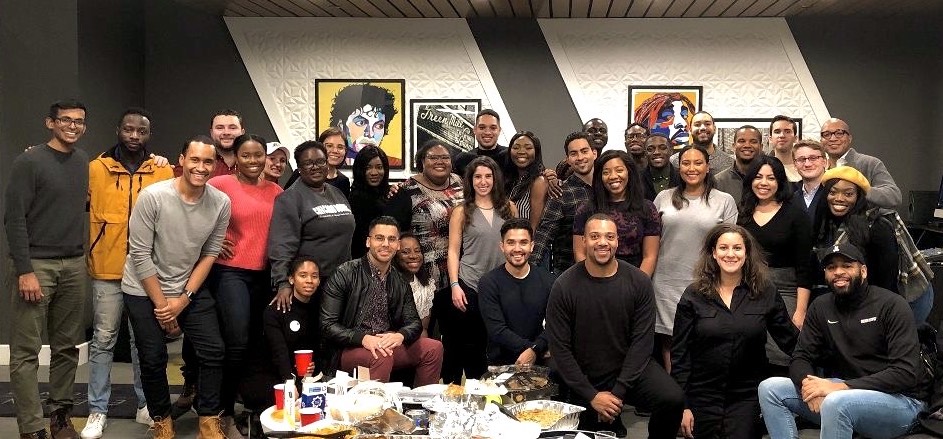Matchmaking for B-School is a Two-Way Street
by Brian Billups
Brian Billups is a Career Prep and MBA Prep alum, who is currently participating in MLT’s MBA Professional Development program as he pursues his degree from the University of Chicago Booth School of Business. Brian shares four helpful tips for researching and testing a b-school to ensure you find the right fit.
 At the beginning of my MBA research process, I scoured through well-produced websites of the institutions I was considering, comparing class profiles to determine how I “stacked up ” to the qualities for which each school was searching. I was trying to assess whether I was the right candidate for the school based on GMAT, GPA, and work experience. As I moved into the end of the application process and started to receive acceptances, however, I had a hard realization. Although I had done due diligence to determine whether my profile matched each school’s criteria, I had not done nearly as much work to determine if the schools fit most of my personal criteria.
At the beginning of my MBA research process, I scoured through well-produced websites of the institutions I was considering, comparing class profiles to determine how I “stacked up ” to the qualities for which each school was searching. I was trying to assess whether I was the right candidate for the school based on GMAT, GPA, and work experience. As I moved into the end of the application process and started to receive acceptances, however, I had a hard realization. Although I had done due diligence to determine whether my profile matched each school’s criteria, I had not done nearly as much work to determine if the schools fit most of my personal criteria.
Although determining personal fit at a school seems like a basic concept, it is not a question that can be answered solely by reviewing websites. For Black, Latinx, and Indigenous students, in particular, the digging has to go much deeper. You’ll want to ensure your school for the next two years feels like a home. It’s important to ensure you will be welcomed at a school, and that you will be fully supported by other students, by faculty, and by the school’s administration. When determining school fit, consider some of the following:
1. Understand Your Needs
What are your personal goals, during and post-program, for pursuing your MBA? Many times, for application essays, we tend to share the Instagram-esque story that we believe an admissions officer would find ideal. You have got to be extra reflective on how you will be able to implement your personal action plan for achieving your goals.
What structures does the school need to have in place for you, specifically, to be successful? Are you the type of person who has been out of formal classes for quite awhile, and who could use support as you re-adjust to being a student? You may want to consider schools that offer academic assistance. At Chicago Booth, the D&I offices offer students free sessions with tutors who are Ph.D. candidates. This offer stands for any class throughout the program. Do this research on what sort of additional benefits come with being enrolled in a program. Speak with current students and with alumni of the program to test whether school offers what you need to complete your goals.
2. Interview Your School
Almost every MBA program will require you to complete an interview as a part of admission. Just as a school uses its interview to add a personal touch to your application and fill in any gaps that may still exist from your written application, you should do the same of the schools you are considering. You should apply this strategy when speaking with students, alumni, admissions staff, and even professors. You are trying to figure out whether you can thrive—professionally, educationally, socially, and mentally—in this program.
Questions you should be asking can range from “How flexible is your curriculum?” to “What initiatives and health services are provided by the school?” If mental health is an important factor for you as you move into this exciting, but sometimes stressful, phase of your life, look for programs that will provide expansive health and wellness support. I’ve personally taken advantage of the $10 therapy sessions offered by the University of Chicago, as well as the refueling activities offered by Booth’s wellness center. Ask the tough questions before and after receiving acceptances.

Brian (pictured left in grey) attends an annual “Friendsgiving” with Chicago Booth’s Hispanic American Business Students Association and African American MBA Association.
3. Consider Your DEI Values
Let’s be honest, most MBA programs are not where they need to be to fully support Black, Latinx, and Indigenous students. For some programs, the recent “awakening” and cultural shift in the U.S. have revealed that many of them have a long way to go. As a co-chair of the African American MBA Association (AAMBAA) at Booth, I realized that the school needed to increase the number of Black, Latinx, and Native students and professors. There was also a need to adjust their crisis response to incidents and matters that directly impact minority students.
By working with the administration, AAMBAA was able to implement short-term changes and is continuing to have an open dialogue with the administration to create longer term strategies in this area. One example is that Booth is creating a Dean Diversity committee, which will meet with the deans on a regular basis.
The school is also developing a crisis response plan with a specific focus for minority students. Conversations between URM students and their administrations are happening in many MBA programs, and although it can be an extra burden for students of color, we must consider the measures a school is taking to change the way they did—or did not—support their Black, Latinx and Native students in the past.
4. Trust Your Gut
My last point is simple but important—trust your gut. Many times rankings, peer pressure, or scholarships can sway you in a particular direction. Don’t get me wrong, money is definitely an important factor when choosing a school, but it is also critically important to remember that it should not be the only determinant. Trust your gut throughout the process. Know, understand, and accept when a school “just doesn’t feel right.” As you move on from the application phase to the acceptance phase, it gets harder to turn away from a school. Be clear and honest on your criteria for a school and if one doesn’t fit your needs, don’t be afraid to move that school out of your consideration.
As cliché as it may sound, getting a full-time MBA will be a life-changing two-year experience. You will be able to start fulfilling your professional goals, while experiencing new things and meeting new people in the process. As you move into this new chapter, use these points to help you navigate your personal needs and how to make your future school truly feel like home.
___
Thinking about an MBA? Think MLT.
Our MBA Prep program provides Black, Latinx, and Native American professionals with the personalized guidance and effective tools needed to successfully navigate the business school application process. Click here to learn more about how MBA Prep can help you!

